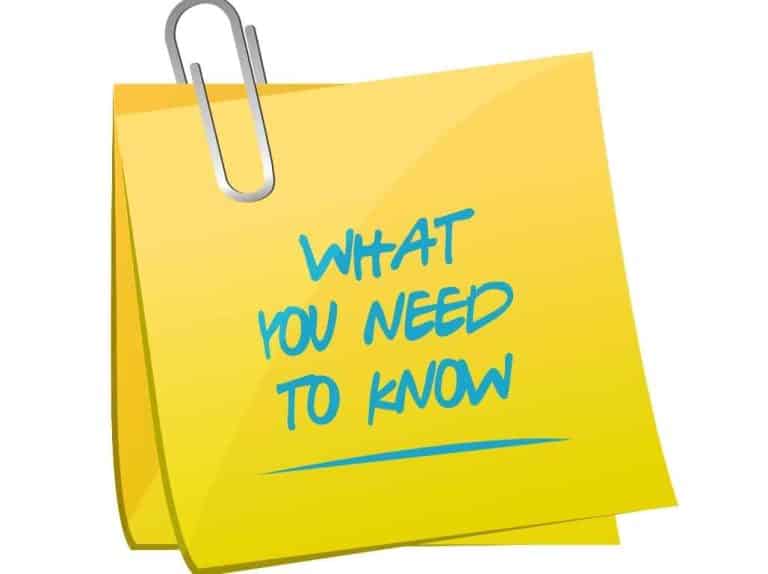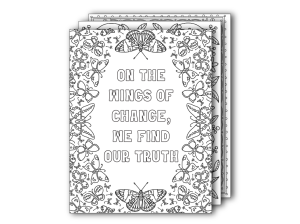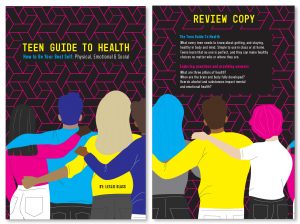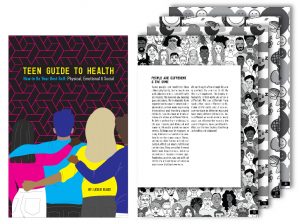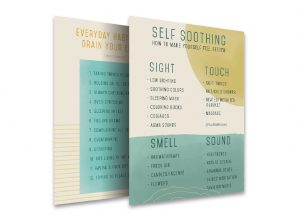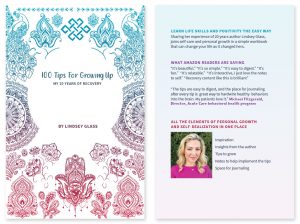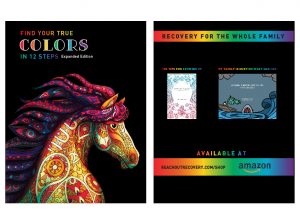Confused about what to call addiction and recovery? We all need an addiction dictionary because the terms associated with addiction and recovery have been evolving in recent years. Some changes in terms have been made to reduce stigma, others have changed based on new diagnosis and research. Recovery Answers from the Recovery Research Institute at Harvard has established the most reliable dictionary of addiction and recovery definitions.
ABSTINENCE
Abstinence is the absence of substance use, however there are many different types of abstinence. Abstinence is typically interpreted as complete abstinence, defined below:
- Continuous abstinence: not consuming the drug of choice during a specified period of time
- Essentially abstinent: not consuming more than a specified amount of the drug over a period of time
- Minimal abstinence: achieving a minimal period of recovery during a period of time
- Point-in-time abstinence: not consuming the drug of choice at a single point in time (e.g., the past 30 days)
- Complete abstinence: continuous abstinence from all alcohol and other drugs
- Involuntary abstinence: enforced abstinence due to hospitalization or incarceration
ABUSER
(stigma alert) A person who exhibits impaired control over engaging in substance use (or other reward-seeking behavior, such as gambling) despite suffering often severe harms caused by such activity.
The word “abuser” was found in research to increase stigma, which can effect quality of care and act as a barrier to treatment seeking in individuals suffering from addiction. Instead, many have recommended the use of ; instead of describing someone as a “drug abuser” to describe them as “a person with, or suffering from, addiction or substance use disorder.”
(Kelly, Saitz, Wakeman, 2016; Kelly and Westerhoff, 2010; Kelly et al, 2010)
ACCEPTANCE & COMMITMENT THERAPY (ACT)
Acceptance and Commitment Therapy (ACT; pronounced like the word “act”) is a cognitive-behavioral approach used in the treatment of substance use disorders that is based in the concepts of acceptance, mindfulness, and personal values.
ACUTE CARE
Immediate, short term medically managed or monitored care, lasting sometimes up to 28 days in length.
ADDICT
(stigma alert) A person who exhibits impaired control over engaging in substance use (or other reward-seeking behavior, such as gambling) despite suffering often severe harms caused by such activity. While commonly used, to help decrease stigma associated with these conditions it has been recommended to use “person first” language; instead of describing someone as an “addict” to describe them as “a person with, or suffering from, addiction or substance use disorder.”
(Kelly, Saitz, Wakeman, 2016; Kelly and Westerhoff, 2010; Kelly et al, 2010)
ADDICTION
According to the American Society of Addiction Medicine, addiction is a primary, chronic, neurobiologic disease with genetic, psychosocial, and environmental factors influencing its development and manifestations. Addiction is characterized by behaviors that include:
- Impaired control over drug use
- Compulsive use
- Continued use despite harm
- Cravings
(Ries, 2009 )
ADDICTION COUNSELOR
Type of non-medically credentialed addiction treatment provider. Counselors vary across jurisdictions in their titles, their required level of education, and required level of training. Addiction counselors encompass “substance abuse counselors” (SACs), “certified alcohol & substance abuse counselors” (CASACs), & “certified alcohol & drug counselors” (CADCs).
View infographic: Meet Your Recovery Team
ADDICTION PSYCHIATRIST
A physician who is board-certified as a psychiatrist with specialized training in addiction diagnosis, treatment & management. Addiction psychiatrists can provide therapy, although most emphasize and prescribe medications & work in collaboration with social workers, psychologists, or counselors who provide psychotherapies.
ADDICTION MEDICINE PHYSICIAN
A board-certified physician in some specialty (e.g., family medicine, pediatrics, neurology) who has undergone specialized training in addiction diagnosis, treatment & management, but who does not typically provide addiction-specific psychotherapy, although often provides brief counseling.
ADVERSE DETERMINATION
Any action by a health plan that denies or limits payment for the requested behavioral or medical treatment or services.
Learn more about: Navigating the Insurance Landscape of Addiction Treatment
AGONIST
A substance that activates a receptor to produce a biological response. The opposite of antagonist (blocking an action), the agonist causes an action.
AL-ANON
Al-Anon is a mutual help organization or peer support group for people who have been affected by a loved one’s alcohol use disorder. Groups are based on 12-step principles and have attendees share stories and build supportive networks to help cope with the difficulties of having a loved one with an alcohol use disorder.
Learn more about: resources for loved ones
Learn more about: peer-based recovery support
ALCOHOL USE DISORDER
A problematic pattern of alcohol consumption, characterized by compulsive use of alcohol, impaired control over alcohol intake, and a negative emotional state when not using, resulting in two or more of the following situations within a 12-month period:
- Drinking more or for a longer period than intended
- On more than one occasion feeling the need or attempting to cut down or stop drinking
- Spending a lot of time drinking, or recovering from the aftereffects of alcohol
- Craving or thinking about wanting a drink or having the urge to use alcohol
- Failing to fulfill major work, school, or home responsibilities due to drinking
- Continuing to drink even though it is causing relationship troubles with your family or friends
- Prioritizing drinking by giving up or cutting back activities that were important to you, or gave you pleasure
- Drinking before or during situations that are physically dangerous—while driving a car, operating machinery, swimming, or having unsafe sex
- Continuing to drink even though drinking is making you feel depressed or anxious, is linked to another health problem, or results in having memory blackouts
- Developing a tolerance for drinking—needing much more than you once did to get the desired effect from alcohol, or not experiencing the same effect when drinking the same amount of alcohol
- Withdrawal, as characterized by having withdrawal symptoms (trouble sleeping, shakiness, restlessness, nausea, sweating, a racing heart, a seizure, or sensing things that are not there [hallucinations])
ALCOHOLICS ANONYMOUS (AA)
International fellowship for individuals with problematic drinking. Founded in 1939, AA is nonprofessional, self-supporting, multiracial, apolitical organization that is open to all ages, and as the largest mutual help organization, offer meetings almost everywhere. AA is a 12-step program that revolves around its main text, known as the Big Book. (see mutual help organizations, peer support group)
ALTERNATIVE PEER GROUPS (APGs)
Recovery support services for adolescents with substance use disorder that engage them in a community of other recovering adolescents, to capitalize on the same desire for peer acceptance that is known to drive, in part, adolescent motivations for substance use. Alternative Peer Groups are grounded in the theory that, if centered on fun activities with peers, recovery will be perceived as more rewarding than substance use.
AMBIVALENCE
A state of psychological tension in which one is pulled in two different directions: to stay the same or to make changes.
ANONYMOUS
Literally means having no name. In the addiction field it is closely linked with the concept of confidentiality because people typically prefer not to have their name or addiction status known due to potential stigma and discrimination. The assurance of anonymity can help with help-seeking because individuals are more inclined to seek help for a stigmatized condition like substance use disorder if they know such help-seeking will be kept completely private.
ANTAGONIST
A substance that interferes with or inhibits the physiological action of another (e.g. blocking the effects of illicit substances).
APPEAL
A legal right for an insured individual, their provider or an authorized representative to seek relief against a health plan or third party determination to deny or limit payment for requested behavioral or medical treatment or services.
Learn more about: Navigating the Insurance Landscape of Addiction Treatment
ARBITRATION
An often binding process for the resolution of disputes outside of courts.
Learn more about: Navigating the Insurance Landscape of Addiction Treatment
ASSERTIVE LINKAGE
A strategy designed to ensure a patient or client reaches the next level of clinical care or becomes connected to a recovery support resource. This typically involves an in-person introduction directly to the next level of care or resource (e.g. a recovery coach takes a patient to their first AA meeting, and introduces them to other members of the meeting, or drives them to a clinical appointment).
Shown in research to have greater effectiveness than passive referral in increasing patients’ engagement in continuing care and recovery support services. Peer linkages tend to have a higher efficacy than doctor or provider linkages.
ASSESSMENT
An ongoing process used to determine the medical, psychological, and social needs of individuals with substance-related conditions and problems. It can take the form of biological assays (e.g., blood or urine samples) as well as clinical diagnostic interviewing and the completion of self-report measures to determine the presence of a substance use disorder or other psychiatric condition and other symptoms and challenges with the ultimate goal of developing a fully informed and helpful treatment plan.
B
BALANCE BILLING
The amount you could be responsible for (in addition to any co-payments, deductibles or coinsurance) if you use an out-of-network provider, which may represent the fee for a particular service that exceeds what the insurance plan allows as the charge for that service.
Learn more about: Navigating the Insurance Landscape of Addiction Treatment
BARBITURATE
A class of sedative-hypnotic compounds that are chemically related through a six-membered ring structure.
BASIC TEXT
The foundational text of the Narcotics Anonymous (NA) organization. It outlines the 12 steps and 12 traditions that are at the core of the Narcotics Anonymous program, as well as containing personal stories of active addiction and recovery.
BEHAVIORAL ADDICTIONS
A form of addiction that involves a compulsion to engage in a rewarding non-drug-related behavior – sometimes called a natural reward – despite experiencing negative harmful consequences due of the compulsive behavior.
BEHAVIORAL HEALTH
The field of health care concerned with substance use and other mental health disorders.
BEHAVIORAL MEDICINE
An interdisciplinary field that integrates knowledge across disciplines to study the behavioral and social aspects of medical conditions and illness.
BENZODIAZEPINES
A class of psychoactive drugs that act as minor tranquilizers producing sedation and muscle relaxation, commonly used in the treatment of anxiety, convulsions, and alcohol withdrawal.
BIG BOOK
The nickname for the basic foundational text of the mutual-help organization, Alcoholics Anonymous (AA). It outlines the 12 steps that are at the core of the Alcoholics Anonymous program, as well as containing personal stories of addiction and recovery.
BIOLOGICAL MODEL OF ADDICTION
A conceptual understanding of addiction that focuses on the genetic or other biological pre-determinants or risks for developing and/or maintaining a substance use disorder.
BIPHASIC EFFECT OF ALCOHOL
2-phase: when consuming alcohol, the body first experiences an energizing or positive effect; this is subsequently followed, with continued consumption, by a depressant or negative effect of alcohol. Therefore, there is a point of diminishing returns (a blood alcohol level between .05-.06%) at which ceasing alcohol consumption will minimize negative consequences. This effect counters cultural myths and often personal beliefs that increasing alcohol consumption will continue to lead to increasing euphoria and energy.
BUPRENORPHINE
A semisynthetic narcotic to control moderate to severe pain and treat opioid use disorder. Buprenorphine is administered by injection to control pain, is used in the form of a transdermal skin patch to control pain or treat opioid use disorder, and is used alone or in combination with naloxone in the form of a dissolvable tablet placed under the tongue or film placed inside the cheek to treat opioid use disorder. Brand names include: Bunavail, Buprenex, Butrans, Subutex, Suboxone, and Zubsolv.
C
CASE MANAGEMENT
The collaborative process of assessment, planning, care coordination, evaluation, and advocacy for options and services to facilitate disease management (e.g. connecting individuals to mutual help organizations, peer & family support services and counseling, employment, housing, basic healthcare, childcare, etc.).
CHARITABLE CHOICE
Direct United States government funding of religious organizations to provide substance use prevention and treatment.
CLAIM
A bill (or invoice), typically in a standardized form, containing a description of care provided, applicable billing codes and a request for payment, submitted by the provider to the patient’s insurance company (or the plan’s third party administrator).
- Appealing a Claim: The process to seek reversal of a denied behavioral health or medical claim. Most insurance carriers have their own process and timeline, but are subject to state and federal regulations.
Learn more about: Navigating the Insurance Landscape of Addiction Treatment
CLEAN
(stigma alert) A reference to a urine test that is not positive for substance use or as a denotation of one’s sobriety. The term has been viewed as potentially stigmatizing because of its pejorative connotation, with the opposite being “dirty.” Instead, use proper medical terminology such as an individual having negative or positive results.
(Kelly, Saitz, Wakeman, 2015)
CLINICAL APPEAL
An appeal that involves a “medical-necessity determination” or other issue related to the medical appropriateness of care.
Learn more about: Navigating the Insurance Landscape of Addiction Treatment
CLOSED MEETINGS
12 Step meetings that are only available to individuals who identify with having a substance use disorder or think that they may have a substance use disorder and want to stop substance use.
Learn more about: peer-based recovery support
CO-DEPENDENCY
(stigma alert) Immoderate emotional or psychological reliance on a partner. Often used with regard to a partner requiring support due to an illness or disease (e.g. substance use disorder). Term has a stigma alert, as the term has not shown scientific merit.
COERCION
The intimidation of a victim to compel the individual to act against his or her will by the use of psychological pressure, physical force, or threats.
COGNITIVE BEHAVIORAL THERAPY (CBT)
A prevalent type of talk therapy (psychotherapy) that involves working with a professional to increase awareness of inaccurate or negative thinking and behavior and to learn to implement new coping strategies.
Learn more about: cognitive behavioral therapy approaches
COLD TURKEY
Slang term for the abrupt and complete cessation in intake of an addictive substance. It stems from the appearance of goosebumps on the skin often observable in addicted individuals when physiologically withdrawing from a substance.
COMMUNITY REINFORCEMENT APPROACH (CRA)
The Community Reinforcement Approach (CRA) is a psychosocial intervention for individuals with alcohol and other drug use disorders that has been adapted for several populations, including adolescents (the Adolescent-Community Reinforcement Approach; A-CRA) and family members of individuals resistant or reluctant to enter treatment (Community Reinforcement and Family Training; CRAFT).
Learn more about: the community reinforcement approach
COMORBIDITY
The occurrence of two disorders or illnesses in the same person, also referred to as co-occurring conditions or dual diagnosis.
COMPULSIVE BEHAVIORS
Performing an act persistently and repetitively even in the absence of reward or pleasure. Compulsive behavior is often enacted to avoid or reduce the unpleasant experience of negative emotion or physical symptoms (e.g., anxiety, withdrawal from a substance).
CONTINGENCY MANAGEMENT
The contingency management (CM) approach, sometimes also referred to as motivational incentives, the prize method, or the carrot and stick method. It is based on the principle of operant conditioning – that behavior is shaped by its consequences.
It is comprised of a broad group of behavioral interventions that provide or withhold rewards and negative consequences quickly in response to at least one measurable behavior (e.g., substance use as measured by a drug test, also called a toxicology screen).
Learn more about: contingency management
CONTINUING CARE
Ongoing care of patients suffering from chronic incapacitating illness or disease.
CO-OCCURRING DISORDERS
Describes patients with both mental illness & substance use disorder. Personality disorder may also co-exist with psychiatric illness and/or substance use disorders. Also known as co-morbidity or dual-diagnosis.
CO-PAYMENT
A dollar amount that an insured patient is expected to pay at the time of service.
Learn more about: Navigating the Insurance Landscape of Addiction Treatment
COPING STRATEGIES
The specific efforts, both behavioral & psychological, utilized to master, tolerate, reduce, or minimize the effects of stressful events. Two general coping strategies have been distinguished as: 1) problem solving strategies (active efforts to alleviate stressful circumstances) and 2) emotion focused strategies to regulate the emotional consequences of stressful or potentially stressful events.
CRAVING
A powerful & strong psychological desire to consume a substance or engage in an activity; a symptom of the abnormal brain adaptions (neuroadaptations) that result from addiction. The brain becomes accustomed to the presence of a substance which when absent produces a manifest psychological desire to obtain and consume it.
CROSS-DEPENDENCE
The ability of one drug to prevent the withdrawal symptoms of one’s physical dependence on another.
CROSS-TOLERANCE
An individual’s tolerance for one drug results in their lessened response to another, typically in the same class of substances (e.g., alcohol, benzodiazepines), but is observable across different classes of substances as well (e.g., alcohol, opioids).
D
DEDUCTIBLE
A dollar amount an insured patient must pay before the insurer will begin to make benefit payments.
Learn more about: Navigating the Insurance Landscape of Addiction Treatment
DELIRIUM TREMENS
A severe form of alcohol withdrawal involving sudden & severe mental or nervous system changes resulting in varying degrees of severe mental confusion and hallucinations. Onset typically occurs 24 hours or longer following cessation of alcohol. It is often preceded by physiological tremulousness and sweating following acute cessation in severely alcohol addicted individuals.
DENIAL
- In a psychological sense,denial describes individuals who deny substance use problems. It is the tendency of alcoholics or addicts to either disavow or distort variables associated with their drinking or drug use in spite of evidence to the contrary. It’s a common misconception that all alcoholics and individuals with substance use disorder are “in denial.” In fact, individuals have various levels of awareness of their substance use problems and readiness to change behavior. Individuals may accurately recognize certain facts concerning their use, such as number of arrests or how often they drink, while at the same time, misperceive the impact that their use has on the individuals around them, their relationships, how they feel about themselves, or the implications of their drinking history.
- In an insurance sense,denial refers to the refusal of a request for payment or reimbursement of behavioral health or medical treatment services.
- Denied Claim: Non-payment of a claim for reimbursement of behavioral health or medical services delivered to the insured patient. The insurance company must inform the patient of the non-payment of the claim and explain why the services are not being reimbursed.
DEPENDENCE
The state in which individual functioning is sustained through the sustained presence of a drug; manifested as a physical disturbance or withdrawal upon removal of the substance.
DEPRESSANT
Psychoactive substance that decreases levels of physiological or nervous system activity in the body decreasing alertness, attention, and energy through decreased heart rate, blood pressure, and respiration rates. Informally referred to as “downers” (e.g., alcohol; benzodiazepines).
DESIGNER DRUGS
A synthetic analog of a legally restricted or prohibited drug, devised to circumvent drug laws through changes to chemical compounds.
DETERRENCE
The use of punishment as a threat to deter people from committing offences. Often contrasted with retributivism, which holds that punishment is a necessary consequence of a crime & should be calculated based on the gravity of the wrong done. A foundational concept of the United States “war on drugs.”
DETOX
Short for “detoxification,” it is the medical process focused on treating the physical effects of withdrawal from substance use and comfortably achieving metabolic stabilization; a prelude to longer-term treatment and recovery.
DIALECTICAL BEHAVIOR THERAPY (DBT)
An empirically supported psychosocial treatment for borderline personality disorder, that utilizes a skills-based approach to teach mindfulness, interpersonal effectiveness, emotion regulation, and distress tolerance. Though designed to treat borderline personality disorder, dialectical behavioral therapy (DBT) is increasingly being used in the context of substance use disorder treatment.
DIRTY
(stigma alert) A reference to a urine test that is positive for substance use. A person still using substances. This term is viewed as stigmatizing because of its pejorative connotation. Instead, use proper medical terminology such as an individual having negative or positive results.
DISEASE
A disease is a particular abnormal condition, a disorder of a structure or function, that affects part or all of an organism and is characterized by specific signs and symptoms.
DISEASE MODEL OF ADDICTION
Classifies addiction as a disease. There are several “disease models,” but addiction is widely considered a complex disease with biological, neurobiological, genetic, and environmental influences among clinical scientists.
DOPE SICK
(stigma alert) A slang term used to reference withdrawal symptoms from opioids, such as heroin.
DRUG
(stigma alert) Drug can mean either a “medication” or a “non-medically used psychoactive substance.” The term drug has a stigma alert due to the ambiguity of the term. This ambiguity may create a barrier to accessing prescription (psychoactive) medications in cases where their use IS medically appropriate. Many advocate instead to use “medication” or “non-medically used psychoactive substances” to decrease stigma and speak with greater specificity.
DRUG ABUSE
(stigma alert) A term sometimes used to describe an array of problems resulting from intensive use of psychoactive substances. It has also been used as a diagnostic label. According to the Diagnostic and Statistical Manual of Mental Disorders (DSM-IV), “substance abuse” is defined as a maladaptive pattern of substance use leading to clinically significant impairment or distress as manifested by one (or more) of the following, occurring within a 12-month period:
- Recurrent substance use resulting in a failure to fulfill major role obligations at work, school, or home (such as repeated absences or poor work performance related to substance use; substance-related absences, suspensions, or expulsions from school; or neglect of children or household).
- Recurrent substance use in situations in which it is physically hazardous (such as driving an automobile or operating a machine when impaired by substance use)
- Recurrent substance-related legal problems (such as arrests for substance related disorderly conduct)
- Continued substance use despite having persistent or recurrent social or interpersonal problems caused or exacerbated by the effects of the substance (for example, arguments with spouse about consequences of intoxication and physical fights).
See the work the Recovery Institute is doing to fight stigma in addiction language: Tell Congress to remove the term “ABUSE” from the names of the US Institutions addressing addiction.
(Kelly, Saitz, Wakeman, 2016; Kelly and Westerhoff, 2010; Kelly et al, 2010)
DRUG CLASSES
Substances can belong to one or more drug categories or classes. A drug class is a group of substances that while not identical, share certain similarities such as chemical structure, elicited effects, or intended usage.
Three common classes of commonly medications and non-medically used psychoactive substance include:
- opioids (e.g. oxycodone, hydrocodone, fentanyl, morphine, heroin)
- depressants (diazepam, clonazepam, alochol)
- stimulants (dextroamphetamine, methylphenidate, cocaine)
DRUG CLASSIFICATIONS
In the United States, drugs are classified into 5 groups known as ‘schedules.’ These 5 schedules determine the medical and legal status of a substance.
Learn more about: drug classifications
DRUG COURTS
Drug courts are problem-solving courts that operate under a specialized model in which the judiciary, prosecution, defense bar, probation, law enforcement, mental health, social service, and treatment communities work together to help non-violent offenders find restoration in recovery and become productive citizens. With an emphasis on rehabilitation and treatment, drug Courts serve only a fraction of the estimated 1.2 million individuals suffering from Substance Use Disorder in the United States criminal justice system.
DRUG DREAM
Reoccurring dreams that occur during the recovery process from substance use disorder that concern depictions of substance use, often vivid in nature, and frequently involving a relapse scenario. These dreams decrease in frequency with time in recovery from substance use disorder.
DSM-5
DIAGNOSTIC & STATISTICAL MANUAL OF MENTAL DISORDERS – Fifth Edition: The 2013 update to the American Psychiatric Association’s (APA) classification and diagnostic tool. In the United States, the DSM-5 serves as a universal authority for psychiatric diagnosis.
Read more about: differences between the DSM-5 and the DSM-IV
DUAL-DIAGNOSIS
Describes patients with both mental illness & substance use disorder. Personality disorder may also co-exist with psychiatric illness and/or substance use disorders. Also known as comorbidity or co-occuring disorders. When Addiction Is A Co-Occurring Disorder
DYSYNERGY
The tendency of one addiction to predispose an individual to another type or form of addiction.
E
EARLY RECOVERY
The first year of remission from a substance use disorder.
EMPLOYEE ASSISTANCE PROGRAM (EAP)
Voluntary work-based intervention programs offered by employers to support employees in management of issues affecting mental and emotional well-being, such as: substance use, stress, grief, family problems, trauma, and psychological disorders. While services may vary, Employee Assistance Programs (EAPs) provide employees with free and confidential assessments, short-term counseling, referrals, and follow-up services.
(U.S. Office of Personnel Management, 2017)
ENABLING
(stigma alert) Actions that typically involve removing or diminishing the naturally occurring negative consequences resulting from substance use, increasing the likelihood of disease progression. Term has a stigma alert, due to the inference of judgement and blame. What’s Enabling and Why Do We Do It?
Learn more about: resources for loved ones
EVIDENCE-BASED PRACTICE (EBP)
Patient care informed through the integration of clinical expertise and best available clinical evidence from systematic research.
EXCLUSIONS
Specific conditions, services, treatments or treatment settings for which a health insurance plan will not provide coverage.
Learn more about: Navigating the Insurance Landscape of Addiction Treatment
F
FENTANYL
A potent opioid used to treat chronic pain. According to the U.S. Centers for Disease Control and Prevention, it is 80 times more potent than morphine and hundreds of times more powerful than heroin. Fentanyl Overview
FETAL ALCOHOL SYNDROME
An irreversible syndrome inherited by children exposed to alcohol consumption by the mother during pregnancy. This syndrome is characterized by physical and mental birth defects. This is currently more commonly referred to as fetal alcohol spectrum disorder.
FULL SUSTAINED REMISSION
1 year without substance use disorder symptoms (except craving).
G
GATEWAY HYPOTHESIS
The gateway hypothesis postulates that use of a certain drug increases the risk for the subsequent use of more potent and addictive or harmful drugs. For instance, marijuana is sometimes referred to as a “gateway drug” because its use has been shown to increase the risk for the use of other drugs. This does not mean that the use of marijuana will inevitably lead to the use of other drugs; only that it is associated with an increased risk. The exact mechanism by which this risk is conferred is not clear; it could be direct (i.e., through changes in the brain) or indirect through exposure to marijuana-using friends who are also using other drugs and who may introduce the person to these other drugs, or both.
GUILT
A cognitive-affective state that emerges in humans when one perceives a personal wrong-doing; it can be adaptive and helpful in increasing the likelihood that behavior remains consistent with one’s values.
H
HALLUCINOGEN
A substance that induces hallucinations (i.e. visions, sounds, smells, tastes, or sensations that do not actually exist; e.g., LSD).
HARM REDUCTION
Policies, programs & practices that aim to reduce the harms associated with the use of psychoactive drugs. The defining features include a focus on the prevention of harm, rather than on the prevention of drug use itself, with attention and focus on the individual’s active substance use (e.g., a clean needle exchange program can reduce rates of transmission of hepatitis C, HIV, or other infectious disease for individuals suffering from heroin use disorder). The Debate On Opioid Harm Reduction
HIGHER POWER
A supreme deity or being, a malleable conception of God, or a “power greater than ourselves,” popularized by the recovery mutual-help organization, Alcoholics Anonymous (AA).
I
IBOGAINE
A naturally occurring psychoactive substance found in plants in the Apocynaceae family (NMDA receptor antagonist). Known to have psychedelic or dissociative properties, Ibogaine is not approved for treatment of substance use disorder in the United States due to lack of proper testing with regard to toxicology, and both the safety and effectiveness of the substance are largely unknown.
ICD-10
The International Classification of Diseases and Related Health Problems 10th Revision (ICD-10) is a coding of diseases, signs and symptoms, abnormal findings, complaints, social circumstances and external causes of injury or diseases, as classified by the World Health Organization (WHO). The code set allows more than 14,400 different codes and permits the tracking of many new diagnoses.
INHALANT
Substances that produce chemical vapors that are inhaled to induce a psychoactive or mind-altering effect. There are four general categories of inhalants — volatile solvents, aerosols, gases, and nitrites.
IN-PATIENT TREATMENT
Admission to a hospital or facility for treatment that requires at least one overnight stay. (see residential treatment)
INTEGRATED HEALTH CARE
An approach characterized by a high degree of collaboration and communication among health professionals, with sharing of information among team members related to patient care and the establishment of a comprehensive treatment plan to address the biological, psychological and social needs of the patient. The inter-professional health care team can include a diverse group of members (e.g., physicians, nurses, psychologists and other health professionals), depending on patient needs.
INTENSIVE OUTPATIENT TREATMENT
A time limited, intensive, non-residential clinical treatment that often involves participation in several hours of clinical services several days per week. It is a step below partial hospitalization in intensity.
INTERVENTION
- A procedure of varying duration typically conducted by a clinician and implemented to stimulate, facilitate, and induce changes in signs, symptoms, or behavior.
- A meeting of an individual with an identifiable substance-related problem with family or other significant others held to directly address the problems being caused by the individuals’ substance use and typically involves expression of care, concern, and explicit demands for behavioral change or the receipt of addiction treatment. Typically conducted when other attempts to influence change have failed. Also known as the Johnson Intervention.
Learn More
K
KORSAKOFF’S SYNDROME
A chronic memory disorder associated with amnesia, caused by a severe deficiency of thiamine (vitamin B-1), most commonly associated with severe alcohol use disorder. Also known as Korsakoff’s Psychosis. (See Wernicke’s Encephalopathy; Wernicke-Korsakoff Syndrome)
L
LAPSE
(stigma alert) A non-technical term, also referred to as a “slip,” used implies a short-term resumption of substance use or heavy/hazardous use (e.g., for a night or a day) that is followed by a return to the original goal of moderate use or abstinence.
This term has a stigma alert due to the terms moral meanings rooted in morality and religion (e.g. lapse in grace), and implied “accidental” manifestation (e.g. lapse in judgement). Many advocate instead to use the terms “resumed,” or “experienced a recurrence” of substance use disorder symptoms.
LEVELS OF CARE
Various levels of treatment intensity ranging from weekly outpatient therapy to more intensive medically monitored or medically managed hospitalization. The American Society of Addiction Medicine (ASAM) have constructed a detailed assessment process based on specific criteria that can provide clinicians with a holistic approach to individualized assessment and placement to the most appropriate level of care along with outcome-driven treatment plans that focus on individualized needs.
Learn More
LONG TERM RECOVERY
5 years of continued remission; the point at which the risk of meeting criteria for a substance use disorder in the following year is no greater than that of the general population.
M
MAINTENANCE DOSE
The amount of a medication administered to maintain a desired level of the medication in the blood.
MANDATED TREATMENT
Treatment required or mandated through a drug court or as a condition of pretrial release, probation, or parole.
MATRIX MODEL
An empirically-supported treatment developed in the 1980s based on Cognitive Behavioral Therapy (CBT) and Motivational Interviewing/Motivational Enhancement Therapy (MI/MET). Implemented over the course of several months, the Matrix model is a highly-structured outpatient method generally used to treat stimulant-based substance use disorders (methamphetamines, cocaine, etc.). This model of treatment focuses on the patient working within a variety of group settings (i.e. family education groups, social support groups, early recovery skills groups, relapse prevention groups, 12-step groups, etc.).
MEASUREMENT-BASED PRACTICE
Measurement-based practice is a framework in which validated (evidence-based) symptom rating scales and screening tools are routinely used in clinical practice to inform treatment decisions and adjustments.
Scales and tools look to screen for and diagnose substance use disorder, measure severity, and monitor disease progression for improvement.
MEDICAL MODEL
An addiction theory that considers addiction a medical rather than social issue.
MEDICAL NECESSITY
Health care services that are clinically indicated for the diagnosis and/or treatment of a medical or behavioral health condition.
- Medical Necessity Appeal:An appeal filed when the health plan has denied payment or reimbursement for level of care or service based on a “lack of medically necessity.” Synonymous with clinical utilization management appeals.
Learn more about: Navigating the Insurance Landscape of Addiction Treatment
MEDICATION ASSISTED DETOX
Detoxification in a medical setting, often with use of medications to support initial withdrawal and stabilization following cessation of alcohol or other drugs.
MEDICATION ASSISTED TREATMENT (MAT)
(stigma alert) Medication-assisted treatment (MAT), including opioid treatment programs (OTPs), combines behavioral therapy and medications to treat substance use disorders (see agonist; antagonist).
Stigma alert, as term may not fully appreciate research that has shown that with or without psychosocial support, medications are effective treatments for addiction. In addition, this term may create a double standard for substance use disorder treatment, as no other medications used to treat other health conditions are referred to as ‘assisted’ treatment. Many advocate instead to use “medications for addiction treatment.”
METHADONE
A synthetic opioid narcotic drug used to reduce withdrawal symptoms and as an opioid replacement therapy maintenance medication for individuals with opioid use disorders. Confused About Methadone?
MINDFULNESS-BASED RELAPSE PREVENTION
Training of techniques in mindfulness, or the ability to be present, to target depression, stress, negative emotions, and cravings in the prevention of relapse for individuals with addiction. 4 Reasons Using Mindfulness In Recovery Works
MOTIVATIONAL ENHANCEMENT THERAPY
Motivational Enhancement Therapy (MET) is an intervention based on Motivational Interviewing approaches and practices.
Unique to Motivational Enhancement Therapies (METs) is the use of clinically relevant patient reported assessment data that is summarized and subsequently fed back to the patient in an Motivational Interviewing (MI), client-centered, counseling style in order to enhance motivation for change.
MOTIVATIONAL INTERVIEWING (MI)
A clinical approach that helps people with mental health and substance use disorders and other chronic conditions such as diabetes, cardiovascular conditions, and asthma make positive behavioral changes to support better health. The approach upholds four principles— expressing empathy and avoiding arguing, developing discrepancy, rolling with resistance, and supporting self-efficacy (client’s belief s/he can successfully make a change).
This is non-directive approach to counseling that attempts to help patients resolve ambivalence about changing substance use and mobilize motivation and action toward healthier change.
SAMHSA
MUTUAL HELP ORGANIZATIONS
Also known as peer support groups, mutual help organizations are peer run volunteer organizations that focus on the socially supportive communication and exchange of addiction and recovery experience and skills. Individuals participate in activities that engage, educate, and support patients recovering from Substance Use Disorder from others facing similar challenges. Mutual help organizations include: AA, NA, Smart Recovery, All Recovery groups and online forums.
Learn more about: peer-based recovery support
N
NALOXONE
An opioid antagonist, similar to Naltrexone, that works by blocking opioid receptors in the brain, thereby blocking the effects of opioid agonists (e.g., heroin, morphine). Naloxone has poor bio-availability when taken sublingually. Naloxone has a high affinity to the mu opioid receptor, yet not as high of an affinity as buprenorphine, at the mu receptor. Brand name: Narcan.
See Infographic: How To Identify a Drug Overdose
See Map: States with Layperson Access to Overdose Reversal Medication
NALTREXONE
A narcotic antagonist, works by blocking opioid receptors in the brain, without activating them, therefore, blocking the effects of opioids (e.g., heroin, morphine). Naltrexone has a high affinity to the Mu receptor, yet not as high as buprenorphine.
NAR-ANON
Nar-Anon is a mutual help organization or peer support group for people who have been affected by a loved one’s drug use disorder. Groups are based on 12-step principles and have attendees share stories and build supportive networks to help cope with the difficulties of having a loved one with a drug use disorder.
NARCOTIC
Originally, narcotic referred to psychoactive compounds with sleep inducing properties (typically opioids such as heroin). In moderate doses, narcotics will dull the senses, relieve pain, and induce sleep. In large doses, narcotics will cause stupor, coma, convulsions, and death.
Today however, narcotic is often used in a legal context, where narcotic is used generally to refer to illegal or illicit substances.
NARCOTICS ANONYMOUS
Born out of the ideology and structure of Alcoholics Anonymous (AA), Narcotics Anonymous is an international fellowship for individuals with problematic drug use. NA is nonprofessional, self-supporting, multiracial, apolitical organization that is open to all ages, offering meetings in over 100 countries. NA is a 12-step program that revolves around its main text, known as the Basic Text.
NATURAL RECOVERY
A common recovery pathway in which remission from substance use disorder is achieved without the support or services of professional or non-professional intervention. Also known as self-managed recovery.
Learn more about: self-managed recovery
NETWORK (IN-NETWORK, OUT-OF-NETWORK)
- In Network
The group of physicians, hospitals and other medical care professionals that a managed care plan has contracted with to deliver medical and/or behavioral health services to its members.
- Out-of-Network
Physicians, hospitals, facilities and other health care providers that are not contracted with the plan or insurer to provide health care services at discounted rates. Depending on an individual’s plan, expenses incurred by services provided by out-of-plan health care professionals may not be covered or may be only partially covered.
NEUROTRANSMITTER
Brain chemicals (e.g. dopamine, serotonin, norepinephrine, epinephrine, GABA, etc.) that communicate information throughout the body by transmitting signals from one neuron to the next across synapses. Imbalances in key neurotransmitters can create cravings and mood instability.
NICOTINE
A toxic colorless or yellowish oily liquid that is the chief active constituent of tobacco. It acts as a stimulant in small doses, but in larger amounts blocks the action of autonomic nerve and skeletal muscle cells acting as a depressant.
Learn more about nicotine addiction
NUMBER NEEDED TO TREAT (NNT)
The number needed to treat (NNT) is the average number of people who need to be treated to achieve one additional good outcome. The ideal NNT is 1, where everyone in the treatment group improves when no one in the control group improves. The higher the NNT, the less effective is the treatment.
O
OPEN MEETINGS
12 Step meetings that can be attended by anyone (those who identify with a substance use disorder, as well as those who do not). Intended to educate the public and concerned significant others about the nature and scope of 12-step meetings.
OPIATE
A drug derived directly from the natural opium poppy plant.
OPIOID
A family of drugs used therapeutically to treat pain, that also produce a sensation of euphoria (a narcotic “high”) and are naturally derived from the opium poppy plant (e.g., morphine and opium) or synthetically or semi-synthetically produced in a lab to act like an opiate (e.g., methadone and oxycodone). Chronic repeated use of opioids can lead to tolerance, physical dependence and addiction.
OPIOID REPLACEMENT THERAPY (ORT)
(stigma alert) An outdated term for use of medications to treat opioid use disorder symptoms and craving, also referred to as “opioid substitution therapy” or “opioid maintenance therapy.”
When used, this term implies that one is simply swapping one addiction for another, replacing an illegal opioid, such as heroin, with a longer acting but less euphoric opioid. Research has shown that with or without psychosocial support, medications are effective treatments for addiction. In addition, this term may create a double standard for substance use disorder treatment, as no other medications used to treat other health conditions are referred to as “replacements.” Many advocate instead to use the term “medications for addiction treatment.”
OPPONENT PROCESS
A theory of motivation and emotion used as a model for drug addiction, that postulates that emotions are pairs of opposites. When one emotion is experienced, the other is suppressed (e.g. an individual experiences purely pleasurable effects from a drug, but once the drug is no longer active, the individual experiences only negative effects. Overtime, the purely pleasurable effects of the drug wear off from repeated exposure, and the individual takes the drug to avoid withdrawal symptoms).
OUTPATIENT TREATMENT
A professionally delivered substance use disorder treatment modality that requires daily to weekly attendance at a clinic or facility, allowing the patient to return home or to other living arrangements during non-treatment hours.
OVER-THE-COUNTER MEDICATIONS (OTC)
Medications directly obtainable in a pharmacy by a consumer without a prescription from a healthcare provider. (see prescription medications)
P
PARADOXICAL DRUG EFFECT
Effects or reactions to a substance that are opposite to the substance’s normal expected effect or outcome (i.e. feeling pain from a pain relief medication).
PARTIAL HOSPITALIZATION
A time-limited, intensive, clinical service that is often medically monitored but is a step in intensity below inpatient hospitalization. A patient may participate in clinical services all day long for days to weeks but resides at home. Definitions of levels of care may vary by state.
PATIENT ACTIVATION
How well patients are equipped to take an active role in their addiction related care, and to use the primary care services available to them, are unclear. More specifically defined as “understanding one’s role in the care process and having the knowledge, skill, and confidence to manage one’s health and health care.”
PATIENT PROTECTION AND AFFORDABLE CARE ACT
Healthcare legislation enacted on March 23, 2010, making substance use disorders one of the ten elements of essential health benefits in the United States. It requires that Medicaid and all insurance plans sold on the Health Insurance Exchange provide services for substance use disorder treatment at the same level as other medical procedures. Commonly referred to as the Affordable Care Act or “Obamacare” after US president, Barrack Obama, under whose government the law was formulated and enacted.
View infographic: The Last 50 Years In Addiction Laws
PEER SUPPORT GROUP
Also known as mutual help organizations, peer support groups are structured non-clinical relationships, in which individuals participate in activities that engage, educate, and support patients recovering from Substance Use Disorder from others facing similar challenges. Peer to Peer groupings include: AA, NA, Smart Recovery, All Recovery groups and online forums.
As part of a larger treatment plan, peer providers offer valuable guidance and connection to individuals in recovery through the process of sharing their own experiences in recovery from substance use disorder.
PERSON-FIRST LANGUAGE
A linguistic prescription structuring sentences to name the person first and the condition second. It is ; instead of describing someone as an “addict” to describe them as a person with, or suffering from, addiction or a substance use disorder. Person-first language articulates that the disease is a secondary attribute and not the primary characteristic of the individuals identity.
PINK CLOUD
An intense euphoric feeling experienced by some individuals in early recovery from substance use disorder in which the patient experiences highly positive and optimistic sentiments.
PHARMACOTHERAPY
Medical treatment by means of drugs.
PHYSICAL DEPENDENCE
(stigma alert) This term may be stigmatizing when used to describe tolerance and withdrawal, as the term implies true dependence. However, this term does not meet the World Health Organization (WHO) International Classification of Diseases (ICD-10) diagnostic criteria for dependence, which would include at lease one psychological component.
PHYSICIAN HEALTH PROGRAM
A state agency that monitors physicians, residents and medical students who have substance use disorders, and psychiatric disorders, with the purpose to allow doctors to practice medicine while going through rehabilitation, while also protecting patients and maintaining a safe standard of care.
POTENCY
The degree of concentration of the psychoactive ingredient of a substance.
PRE-AUTHORIZATION
Confirmation of coverage by the insurance company for a service or product before receiving the service or product from the medical provider. This is also known as prior authorization.
Learn more about: Navigating the Insurance Landscape of Addiction Treatment
PRESCRIPTION DRUG MISUSE
(stigma alert) The use of a medication without a prescription or usage of a drug in a way other than as prescribed; or for the experience or feeling elicited. This term is used interchangeably with “non-medically used psychoactive substance” or prescription drug abuse. This term has a stigma alert as the word “misuse” is an expression of judgement. Instead, use clear, unambiguous, non-stigmatizing terminology such as “non-medical use of a psychoactive substance.”
(Kelly, Saitz, Wakeman, 2016; Kelly and Westerhoff, 2010; Kelly et al, 2010 etc.)
PRESCRIPTION MEDICATIONS
Medications available to consumers only with a specific written authorization from a healthcare provider. (see over-the-counter medications)
PREVENTION PARADOX
A contradictory scenario whereby the majority of cases of substance-related harm come from a population at low or moderate risk of addiction, while only a minority of cases come from the population who are at high risk of substance-related harm. Taking alcohol use as an example, an alcohol “prevention paradox” would be a case where low-risk drinkers would also require some kind of prevention/intervention to prevent overall harm in the population, despite the fact the incidence of risk is much lower in this group relative to the heavy drinking population.
PRIOR AUTHORIZATION
A medical insurance term that requires patients and clinicians to seek approval from insurance providers before implementing a treatment service.
Read more about: navigating the insurance landscape of addiction treatment
PROBLEM-BEHAVIORAL THEORY (PBT)
Proposed by Richard Jessor in 1991, Problem Behavioral Theory is a conceptual framework that examines factors leading to adolescent substance use. The theory proposes that behavior is tied to goals, and adolescent substance use results when a teen holds goals and values that are unconventional or do not align with typical social values of society.
PUBLIC HEALTH APPROACH
An approach to drug policy that is a coordinated, comprehensive effort that balances public health & safety in order to create safer, healthier communities, measuring success by the impact of both drug use & drug policies on the public’s health.
PUNISHMENT
A negative consequence occurring following a behavior with the intention of decreasing the frequency of the behavior. It can take the form of “positive punishment” (e.g., the application of an adverse condition such as an electric shock) or “negative punishment” (e.g., the withdrawal of a privilege; “Time out” or “being grounded” is a good example of negative punishment for children).
PSYCHOSOCIAL THERAPY
Non-pharmacological treatments such as psychotherapy. Psychosocial refers to an individual’s psychological development in and interaction with their social environment. Psychosocial treatments or interventions include can include structured counseling, motivational enhancement, case management, care-coordination, psychotherapy and relapse prevention.
R
RAPID DETOX
Anesthesia assisted detoxification; injection of high doses of an opiate antagonist, followed by an infusion of Naloxone.
RECOVERY
The process of improved physical, psychological, and social well-being and health after having suffered from a substance-related condition. How Long Does Addiction Recovery Take
Read more about: the different definitions of recovery over time
RECOVERY CAPITAL
The resources (social, physical, human and cultural), which are necessary to begin and maintain recovery from substance use disorder.
(Best & Laudet, 2010; Cloud & Granfield, 2008)
RECOVERY COACH
Typically a non-clinical peer support specialist or “peer mentor” operating within a community organization (e.g., a Recovery Community Center) or a clinical organization (e.g., treatment program or hospital) and can therefore be a paid or volunteer position. Recovery coaches are most often in recovery themselves and therefore offer the lived experience of active addiction and successful recovery. They focus on helping individuals to set & achieve goals important to recovery. They do not offer primary treatment for addiction, do not diagnose, & generally, are not associated with any particular method or means of recovery.
RECOVERY COMMUNITY CENTER
A center or hub that organizes recovery networks regionally and nationally to facilitate supportive relationships between individuals in recovery as well as family and friends of people in recovery. Centers may provide advocacy training, peer support organization meetings, social activities, and other community based services.
Learn more about: recovery community centers
RECOVERY COMMUNITY ORGANIZATIONS (RCO’s)
An independent, non-profit organization led and governed by representatives of local communities of individuals in recovery from a substance use disorder.
RECOVERY ORIENTED SYSTEMS OF CARE (ROSC)
A coordinated network of community based services that involves a strengths-based and personalized approach to recovery and increasing quality of life.
RECOVERY RATES
The percentage of addicted persons undergoing treatment, who achieve abstinence or remission following treatment in some stated time period (e.g., in the year following discharge from treatment) Sometimes referred to as “success rate”.
RECOVERY RESIDENCES
An alcohol- and drug-free living facility for individuals recovering from alcohol or other drug use disorders that often serves as an interim living environment between detoxification experiences or residential treatment and mainstream society. Also known as Sober Houses, Sober Living Houses (SLHs), Sober Living Homes, or Sober Living Environments.
Learn more about: recovery residences
RECEPTOR
Various specific protein molecules located in the surface membranes of cells & organelles to which complementary molecules may become bound (e.g. hormones, neurotransmitters, antigens, or antibodies).
REFERRAL
A clinical linkage strategy designed to enhance engagement with another clinical service, provider, or recovery support service (see also: assertive linkage).
REINFORCEMENT (POSITIVE & NEGATIVE)
The application or withdrawal of a stimulus or condition with the goal of increasing the frequency of a behavior. Positive reinforcement uses the application of a reward following the behavior to increase behavior; negative reinforcement uses the withdrawal of a negative stimulus or condition to increase the frequency of behavior.
RELAPSE
(stigma alert) Relapse often indicates a recurrence of substance use. More technically, it would indicate the recurrence and reinstatement of a substance use disorder and would require an individual to be in remission prior to the occurrence of a relapse.
The highest risk for recurrence of substance use disorder symptoms occurs during the first 90 days following the initial intervention. The risk for recurrence of symptoms decreases after 90 days. This indicates that individuals attempting to recover from substance use disorder need the most intensive support during this first 3-month period, as individuals are experiencing substantial physiological, psychological, and social changes during this early recovery phase. There is typically a greater sensitivity to stress that makes continued recovery challenging.
This term has a stigma alert, as it implies moral failure. Instead use morally neutral terms such as “resumed,” or experienced a “recurrence” of symptoms.
(Hubbard et al., 1997; Hunt et al., 1971; White, 2010)
RELAPSE PREVENTION (RP)
Relapse Prevention is a skills-based, cognitive-behavioral approach that requires patients and their clinicians to identify situations that place the person at greater risk for relapse – both internal experiences (e.g., positive thoughts related to substance use or negative thoughts related to sobriety that arise without effort, called “automatic thoughts”) and external cues (e.g., people that the person associates with substance use). How To Prevent Relapse
Read more about: relapse prevention
REMISSION
An individual is in remission if they once met DSM-IV criteria for a substance use disorder, but no longer meet the criteria and or have not met this criteria within one year.
RESIDENTIAL TREATMENT
A model of care for substance use disorder that houses affected individuals with others suffering from the same conditions to provide longer-term rehabilitative therapy in a therapeutic socially supportive milieu. Also known as in-patient treatment.
RISK FACTORS
Attribute (e.g., genetics), characteristic (e.g., impulsivity) or exposure (e.g., to prescription opioids) that increases the likelihood of developing a disease or injury.
S
SCREENING, BRIEF INTERVENTION, AND REFERRAL TO TREATMENT (SBIRT)
An evidence-based method used to identify, reduce, and prevent problematic substance use and substance use disorder.
- SCREENING –An assessment – usually brief such as a paper and pencil self-report measures or a biological assay (e.g., urine/blood) – to help detect risky or harmful substance use. This is often conducted by healthcare professionals using standardized screening tools in a specific clinic or other setting.
- BRIEF INTERVENTION –A short conversation or counseling session in which healthcare providers typically offer feedback and advice in order to motivate individuals identified as at-risk for substance-related harm to become more aware of the risk and to reduce or eliminate substance use or to seek treatment.
- REFERRAL TO TREATMENT –The 3rd and final stage in the SBIRT model, when a healthcare provider formally refers a patient identified as having or is at-risk for substance use disorder to additional services such as brief therapy or longer-term treatment.
SHAME
A painful, negative emotion, which can be caused or exacerbated by conduct that violates personal values. Overcoming Shame/Anger In Addiction Treatment Can also stem from deeply held beliefs that one is somehow flawed and unworthy of love, support, and connection, leading to increased odds of isolation. These Are 4 Causes Of Damaging Shame
SLIP
(stigma alert) A non-technical term, also referred to as a “lapse,” used implies a short-term resumption of substance use or heavy/hazardous use (e.g., for a night or a day) that is followed by a return to the original goal of moderate use or abstinence.
This term has a stigma alert due to the terms implication of culpability and implied “accidental” manifestation (i.e.: oops, I just slipped on a banana peel). Instead use terms such as “resumed,” or experienced a “recurrence” of substance use disorder symptoms.
SOBER
A state in which one is not intoxicated or affected by the use of alcohol or drugs.
SOBER COACH
SOBRIETY
The quality or state of being sober.
SOCIAL DETOX
Detoxification in an organized residential setting to deliver non-medical support to achieve initial recovery from the effects of alcohol or another drug. Staff provide safe, twenty-four-hour monitoring, observation, and support in a supervised environment for patients. Social detoxification is characterized by an emphasis on peer and social support for patients whose intoxication or withdrawal signs and symptoms require twenty-four-hour structure and support but do not require medically managed inpatient detoxification. (see detox)
SOCIAL ENTERPRISE
Businesses that help solve social problems, improve communities, people’s life chances, or environment. Profits stem from selling goods and services in the open market, but profits are then reinvested back into the business or the local community. This model has started to be used in addiction recovery settings.
Learn more about: employment-based recovery services
SPONSOR
A volunteer who is currently practicing the 12-step program of recovery espoused by Alcoholics Anonymous (AA) or other 12-step mutual-help organizations (e.g., Narcotics Anonymous, Marijuana Anonymous) and who helps newer AA members by providing support, encouragement, & guidance to promote sustained long-term recovery.
STAGES OF CHANGE MODEL
From the Transtheoretical Model (TTM). The stages of change model is an integrative, biopsychosocial model used to conceptualize the process of intentional behavior change. It emerged from research that found individuals move through a series of stages when modifying behavior. Developed by Prochaska & DiClemente, 1983; Prochaska, DiClemente, & Norcross, 1992, the five stages of change are: pre-contemplation, contemplation, preparation, action, and maintenance. A sixth stage of relapse has also been suggested that occurs for many in the process of behavioral change before eventually reaching remission and recovery.
- PRE-CONTEMPLATION–1st stage of the transtheoretical stage of change model Used to describe an individual who does not yet acknowledge an objectively observable substance-related problem (see also denial), and has no intention of changing behavior.
- CONTEMPLATION– the 2nd stage in the transtheoretical “Stages of Change” model. It refers to acknowledging that there is a problem related to substance use/activity, but the individual is not yet ready or sure of wanting to make a change.
- PREPARATION– the 3rd stage of the transtheoretical “Stages of Change” model signifying someone who has made a decision to change and is getting ready to do so.
- ACTION– Changing behavior; the 4th stage of the “Stages of Change” transtheoretical behavioral change model. This stage marks the process or state of doing something, or getting something done, especially for a particular purpose: the exertion of power or energy.
- MAINTENANCE– The 5th stage of the transtheoretical “Stages of Change” model. This stage marks the continuous process of maintaining or preserving abstinence, remission, or recovery. 2. A type of treatment used to sustain a level of stability and health (e.g., methadone maintenance treatment for opioid use disorder).
Learn more about: the stages of recovery
View infographic: Stages of Change Diagram
STIGMA
An attribute, behavior, or condition that is socially discrediting. Known to decrease treatment seeking behaviors in individuals with substance use disorders.
See the work the Recovery Institute is doing to fight stigma in addiction language: Tell Congress to remove the term “ABUSE” from the names of the US Institutions addressing addiction.
STIMULANT
A psychoactive substance that increases or arouses physiologic or nervous system activity in the body. A stimulant will typically increase alertness, attention, and energy through a corresponding increase in heart rate, blood pressure, and respiration rates. Informally referred to as “uppers” (e.g., cocaine, amphetamine/methamphetamine).
SUBOXONE
Approved by the FDA in 2002 as a medication assisted treatment for opioid dependence, Suboxone contains the active ingredients of buprenorphine hydrochloride and naloxone. The mixture of agonist and antagonist is intended to reduce craving while preventing misuse of the medication. How Does Suboxone Work?
SUBSTANCE ABUSE
(stigma alert) A term sometimes used to describe an array of problems resulting from intensive use of psychoactive substances. It has also been used as a diagnostic label. According to the Diagnostic and Statistical Manual of Mental Disorders (DSM-IV), “substance abuse” is defined as a maladaptive pattern of substance use leading to clinically significant impairment or distress as manifested by one (or more) of the following, occurring within a 12-month period:
- Recurrent substance use resulting in a failure to fulfill major role obligations at work, school, or home (such as repeated absences or poor work performance related to substance use; substance-related absences, suspensions, or expulsions from school; or neglect of children or household).
- Recurrent substance use in situations in which it is physically hazardous (such as driving an automobile or operating a machine when impaired by substance use)
- Recurrent substance-related legal problems (such as arrests for substance related disorderly conduct)
- Continued substance use despite having persistent or recurrent social or interpersonal problems caused or exacerbated by the effects of the substance (for example, arguments with spouse about consequences of intoxication and physical fights).
See the work the Recovery Institute is doing to fight stigma in addiction language, asking Congress to remove the term “ABUSE” from the names of the US Institutions addressing addiction.
SUBSTANCE DEPENDENCE
A term used synonymously with “addiction” but sometimes also used to distinguish physiological dependence from the syndrome of addiction/substance use disorder. It was used in prior iterations of the DSM to signify the latter. According to the Diagnostic and Statistical Manual of Mental Disorders (DSM-IV), substance dependence is defined as a maladaptive pattern of substance use leading to clinically significant impairment or distress, as manifested by three (or more) of the following, occurring any time in the same 12-month period:
- Tolerance, as defined by either of the following: (a) A need for markedly increased amounts of the substance to achieve intoxication or the desired effect or (b) Markedly diminished effect with continued use of the same amount of the substance.
- Withdrawal, as manifested by either of the following: (a) The characteristic withdrawal syndrome for the substance or (b) The same (or closely related) substance is taken to relieve or avoid withdrawal symptoms.
- The substance is often taken in larger amounts or over a longer period than intended.
- There is a persistent desire or unsuccessful efforts to cut down or control substance use.
- A great deal of time is spent in activities necessary to obtain the substance, use the substance, or recover from its effects.
- Important social, occupational, or recreational activities are given up or reduced because of substance use.
- The substance use is continued despite knowledge of having a persistent physical or psychological problem that is likely to have been caused or exacerbated by the substance (for example, current cocaine use despite recognition of cocaine-induced depression or continued drinking despite recognition that an ulcer was made worse by alcohol consumption).
SUBSTANCE MISUSE
(stigma alert) The use of a substance for unintended or intended purposes in improper amounts or doses. Term has a stigma alert, due to the inference of judgement and blame. Instead, many recommend using the terms “substance use” or “non-medical use.”
SUBSTANCE USE DISORDER
The clinical term describing a syndrome consisting of a coherent set of signs and symptoms that cause significant distress and or impairment. When Does A Habit Become An Addiction
SUSTAINED REMISSION
Someone who once met diagnostic criteria for an alcohol or other drug use disorder, and then no longer meets the threshold for the disorder for at least 1 year.
SYMPTOM TRIGGERED DOSING
Doses are individualized and only administered on the appearance of early symptoms.
SYNDROME
A group of signs and symptoms that appear together and characterize a disease or medical condition.
SYNERGISTIC EFFECT
An effect caused by the interaction of two or more substances that magnifies the effect to be greater than the sum of each substance’s individual effects.
SYNTHETIC
Made synthetically or entirely from chemicals, and not made as a derivative of the original substance or plant (e.g. the opium poppy, marijuana plant, etc.) Examples of synthetic drugs include: carfentanil/carfentanyl, sufentanil, fentanyl, spice, bath salts, & herbal incense.
T
TAPER
As in tapering a medication or other drug: A practice in pharmacotherapy of lowering the dose of medication incrementally over time to help prevent or reduce any adverse experiences as the patients’ body makes adjustments and adapts to lower and lower doses.
TITRATION
The progressive or gradual increase in drug dosage to determine an optimal patient dosage.
TOLERANCE
Normal neurobiological adaptation characterized by the need to increase dosage overtime to obtain the original effect. A state in which a substance produces a diminishing biological or behavioral response (e.g. a higher dosage is needed to produce the same euphoric effect experienced initially).
TOUGH LOVE
A controversial approach to promotion of behavioral change through love or affectionate concern expressed in a stern or unsentimental manner (as through discipline).
First used in 1976, the term “tough love” was not applied to the addiction model until the 1980s, when David and Phyllis York wrote an influential book about the addiction and rehabilitation of their daughter entitled Toughlove. In the book, the authors outline a view of rehabilitation techniques parents should use with their addicted children that relies on consequences ranging from mild to severe such as: take legal custody of the children of the individual with substance use disorder, refusal to provide financial assistance, asking the individual to leave the home, or refusing to provide bail money or legal assistance.
The logic behind the “tough love” approach is founded in the belief that the parent is in control of the household, and the child is in control of their behavior. If the child does not accept the rules of the house, the child is not allowed to stay in the house. When faced with the choice of being asked to leave the house, the ideal outcome would be that the child would choose sobriety.
Today a balance in the implementation of tough love as a practice is suggested, and individuals should seek professional help rather than trying to produce results by themselves.
TREATMENT
The management and care of a patient to combat a disease or disorder. Understanding Addiction Recovery Options
Learn more at: Pathways to Recovery
TREATMENT LIMITATIONS
- Quantitative Treatment Limitation (QTL)
Limits based on frequency of treatment, number of visits, days of coverage or days in a waiting period. A limitation that is expressed numerically, such as an annual limit of 50 outpatient visits.
- Non-Quantitative Treatment Limitation (NQTL)
Any non-financial treatment limitation imposed by a health plan that limits the scope or duration of treatment (i.e. pre-authorization, medical necessity, utilization review, exclusions, etc.).
TRIGGER
A specific stimulus that sets off a memory or flashback, transporting the individual back to a feeling, experience, or event which may increase susceptibility to psychological or physical relapse. How Pain Triggers Addiction
TWELVE STEP FACILITATION (TSF)
An evidence-based clinical approach to substance use disorder treatment that is grounded in the principles of Alcoholics Anonymous (AA) and Narcotics Anonymous (NA) with the two primary goals of motivating the patient to develop a desire to cease using substances and to also acknowledge the need for active participation in 12-step mutual help organizations such as AA and NA as a means of maintaining recovery.
Learn more about: 12-step facilitation
TWO-STEPPING
A derisory term used to describe individuals in Alcoholic Anonymous (AA) or other 12-step programs, who practice step one and portions of the 12th step of the 12-step program (i.e., remain abstinent and carry the message of recovery to other individuals suffering from addiction) but do not practice any other steps or principles of the 12-step program.
W
WERNICKE’S ENCEPALOPATHY
Neurological symptoms caused by biochemical lesions of the central nervous system after exhaustion of thiamine (vitamin B-1), most commonly associated with alcohol use disorder. (See Korsakoff Syndrome; Wernicke-Korsakoff Syndrome)
WERNICKE-KORSAKOFF SYNDROME
The co-occurrence of Wernicke’s Encephalopathy simultaneously with Korsakoff syndrome. Also known as wet-brain. Encephalopathy typically precedes Korsakoff’s Psychosis and can be prevented via administration of vitamin B-1 (Thiamin); if missed, onset results in permanent neurological damage. (See Korsakoff Syndrome; Wernicke’s Encephalopathy)
WITHDRAWAL
Physical, cognitive, and affective symptoms that occur after chronic use of a drug is reduced abruptly or stopped.
Content originally published by Addictionanswers.org

